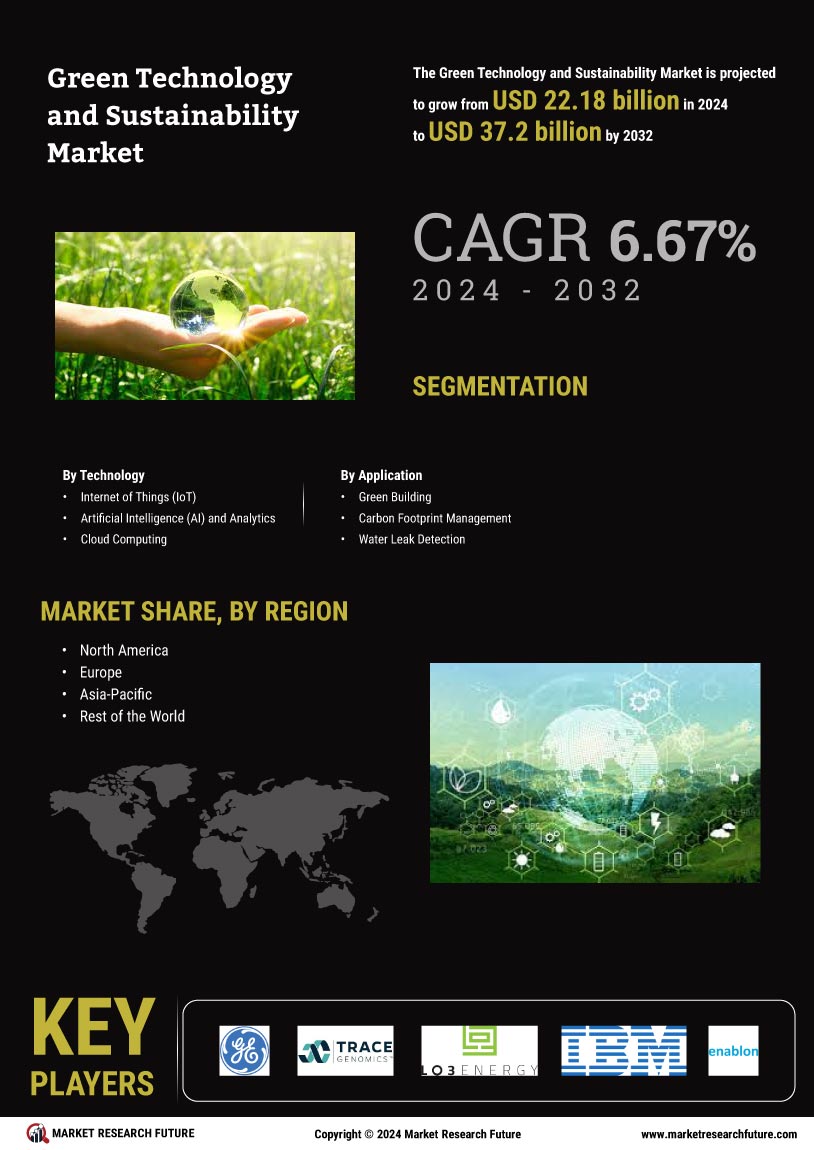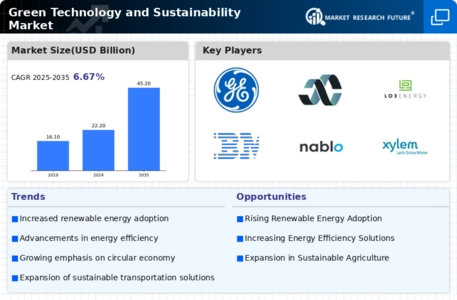Increasing Regulatory Support
The Green Technology and Sustainability Market is experiencing a surge in regulatory support from various governments. This support manifests through incentives, subsidies, and tax breaks aimed at promoting sustainable practices. For instance, many countries have set ambitious targets for reducing greenhouse gas emissions, which necessitates the adoption of green technologies. In 2025, it is estimated that regulatory frameworks will continue to evolve, potentially leading to a 30% increase in investments in renewable energy and sustainable practices. This regulatory environment not only encourages innovation but also fosters a competitive landscape where businesses are incentivized to adopt sustainable technologies. As a result, the Green Technology and Sustainability Market is likely to witness accelerated growth driven by these supportive policies.
Corporate Sustainability Initiatives
Many corporations are adopting sustainability initiatives as part of their business strategies, which is positively influencing the Green Technology and Sustainability Market. These initiatives often include commitments to reduce carbon footprints, enhance resource efficiency, and invest in renewable energy sources. As of 2025, a growing number of companies are expected to set science-based targets for emissions reductions, which could lead to a substantial increase in demand for green technologies. This corporate shift not only reflects a commitment to sustainability but also aligns with investor expectations for responsible business practices. Consequently, the Green Technology and Sustainability Market is likely to benefit from increased corporate investments in sustainable solutions.
Consumer Demand for Sustainable Products
There is a notable shift in consumer preferences towards sustainable products, which is significantly impacting the Green Technology and Sustainability Market. As awareness of environmental issues grows, consumers are increasingly seeking products that align with their values. This trend is reflected in market data, indicating that sales of sustainable goods have risen by approximately 25% in recent years. Companies are responding by integrating sustainability into their product offerings, which not only meets consumer demand but also enhances brand loyalty. The Green Technology and Sustainability Market is thus positioned to benefit from this evolving consumer landscape, as businesses that prioritize sustainability are likely to gain a competitive edge.
Investment in Sustainable Infrastructure
Investment in sustainable infrastructure is becoming a focal point for governments and private entities, significantly impacting the Green Technology and Sustainability Market. Infrastructure projects that prioritize sustainability, such as green buildings, public transportation systems, and renewable energy installations, are gaining traction. In 2025, it is anticipated that investments in sustainable infrastructure will reach unprecedented levels, potentially exceeding $1 trillion. This influx of capital is expected to drive innovation and create new market opportunities within the Green Technology and Sustainability Market. As stakeholders recognize the long-term benefits of sustainable infrastructure, the market is likely to experience robust growth, fostering a more sustainable future.
Technological Innovations in Energy Efficiency
Technological advancements are playing a crucial role in enhancing energy efficiency within the Green Technology and Sustainability Market. Innovations such as smart grids, energy storage solutions, and advanced energy management systems are becoming increasingly prevalent. These technologies not only reduce energy consumption but also lower operational costs for businesses. In 2025, it is projected that energy-efficient technologies will account for a significant portion of the market, with estimates suggesting a growth rate of around 20% annually. This trend indicates that companies investing in energy-efficient solutions are likely to see substantial returns, thereby driving further investment in the Green Technology and Sustainability Market.

















Leave a Comment